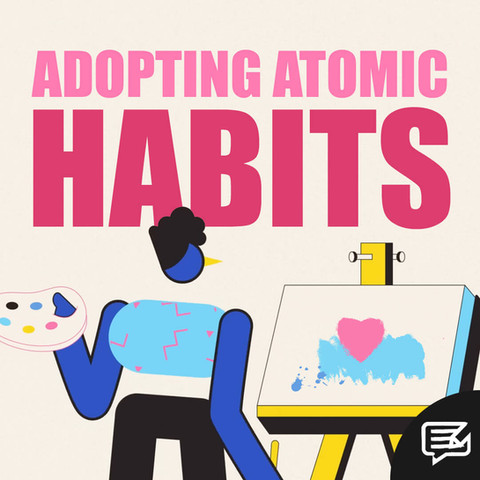
06.12.22
ALWAYS DAY ONE
As company mantras go, Amazon’s ‘Always Day One’ is a thinker. Does it infer progress is slow? That you’ll perpetually feel out of your depth? Perhaps a Groundhog Day of sorts, drowning in a sea of acronyms like ACS, ASIN and HOTW…
On the contrary, those three words are considered to be inspirational. It’s the reason you’ll find #stilldayone and the like on the LinkedIn posts of Amazonians celebrating their five, 10 and 15-year work anniversaries. It’s not a meaningless motto, but a mission statement underpinning Amazon’s insatiable passion for innovation.



Alex Kantrowitz, author of Always Day One: How the Tech Titans Plan to Stay on Top Forever, writes:
“There’s an emotional need for innovation that fuels Amazon’s top leaders, Jeff Wilke (now-former CEO of Amazon Worldwide Consumer) told me. ‘I want to invent, and be in unchartered territory, and have the emotion associated with the unknown that is a mixture of fear, and uncertainty, and excitement.’”
Now that’s what day one is about: acting with the scrappiness and vitality of a start-up. But why is that important? Surely a hugely successful 28-year-old business can afford to act its age?
Founder Jeff Bezos disagrees. In a letter to shareholders in 2016, he explained:
"Day 2 is stasis. Followed by irrelevance. Followed by excruciating, painful decline. Followed by death. And that is why it is always Day 1."
Bezos goes on to share his ‘starter pack’ of essentials for Day 1 defence: customer obsession, a skeptical view of proxies, the eager adoption of external trends, and high-velocity decision-making (i.e. making fast, high-quality decisions as a nimble start-up would do).
INVENT AND SIMPLIFY
If ‘customer obsession’ sounds vaguely familiar, it’s because it is one of Amazon’s famed Leadership Principles – a list of 16 attributes that dictate how Amazon operates: who they hire, how performance is measured, and how decisions – big or small – are made.
Take ownership, hire and develop the best, insist on the highest standards… all principles firmly rooted in common sense. After all, you wouldn’t want a team of folk who deny culpability, make poor hiring decisions and allow work of questionable quality to land in front of consumers…
But there was one principle in particular on the list that piqued my interest: “Invent and simplify”:
“Leaders expect and require innovation and invention from their teams and always find ways to simplify. They are externally aware, look for new ideas from everywhere, and are not limited by ‘not invented here.’ As we do new things, we accept that we may be misunderstood for long periods of time.”
If Amazon’s famous flywheel is to thank for the retail business taking off, then this principle could well be responsible for the rest of it: Amazon Web Services, Kindle, Alexa… even their satellite-building programme, Project Kuiper, if it ever gets off the ground!
So how did they come to pass?
It’s no secret that new projects inside Amazon are born from six-page memos. As famous as Bezos’ two-pizza rule, the six-pager is fundamental to getting initiatives approved. Set in the future (and typically picture-free) they detail everything you could want to know about a new product or service, and allow executive teams to champion and justify the best ideas whilst disregarding the bad ones.
Ex-Amazonian Micah Baldwin tells Kantrowitz:
“There are two sides to invention… There’s thinking and doing. And most doers don’t think. And most thinkers don’t do. The great thing about the Amazon memo process is it forces you to do both.”
Amazonians call this process ‘working backwards’, and often accompany their memos with a draft internal press release – otherwise known as a ‘backward press release’. In an article for Forbes, Brittain Ladd, formerly the worldwide expansion leader of Amazon Fresh and Pantry, writes:
“An internal press release allows a team or an individual to write about all of the great things that their idea will generate. To bring the document to life, you can write quotes from executives, famous people and invented customers in the document. For example, I wrote the following invented quote in a press release at Amazon: ‘I thought nothing could give me more pleasure than driving one of my Teslas,’ stated Elon Musk, the founder of Tesla. ‘However, shopping at a Prime by Amazon grocery store is an incredible experience.’”
THE ENGINEER'S MINDSET
Whilst spending an afternoon attributing false quotes to Elon Musk does sound entertaining, it’s the depth of thought that goes into the memo / press release combo that matters the most. It focuses the mind on the “how” – not just the “what”.
Adopting an engineering mindset can help in this regard – an approach favoured by many of the tech titans that Kantrowitz writes of:
“The engineer’s mindset underpins a culture of building, creating, and inventing [...] People employing the engineer’s mindset appreciate that inventive ideas can come from anywhere. They build pathways to get these ideas to decision-makers and develop systems to ensure they can succeed once greenlit.
“Engineering organisations are naturally flat […] people feel empowered to go up to the highest-ranking person and tell them exactly what they think.”
Facilitating a culture of open and frank communication is one ingredient in the tech titans’ recipe for success. Another pertains to a team’s ability to collaborate:
“Engineers typically work on one component of a more significant project in which, if their small thing breaks, the whole project can break down […] This type of work makes engineers master collaborators.”
Surprisingly, Kantrowitz remarks that the engineer’s mindset is nowhere to be found inside Tim Cook’s Apple:
“Democratic invention is rarely encouraged, people and ideas are constrained by hierarchy, and collaboration is held back by secrecy […] The result is predictable: Apple is great at polishing straightforward ideas handed down from the top, but struggles to build new, inventive products.”
Come to think of it, has Apple been truly ground-breaking since the passing of Steve Jobs? Or do they simply regurgitate the same winning formula with a new number at the end each September?
Kantrowitz posed the question of how to address Apple’s current lack of inventiveness to legendary co-founder Steve Wozniak who responded:
“Let the lower-level managers make the decisions. More responsibility to the lower levels.”
Affording lower-level managers autonomy and responsibility is a prime example of the Always Day One mentality in practice. Where a strict hierarchical structure stifles innovation by restricting collaboration and open communication, a more free-flowing approach (akin to a start-up) creates opportunities for inventive ideas to bubble to the surface.
Always Day One may sound like meaningless spiel at first, but I have more than a sneaking suspicion that Amazon are on to something. They’re only one of the most successful companies in history, after all…

























































